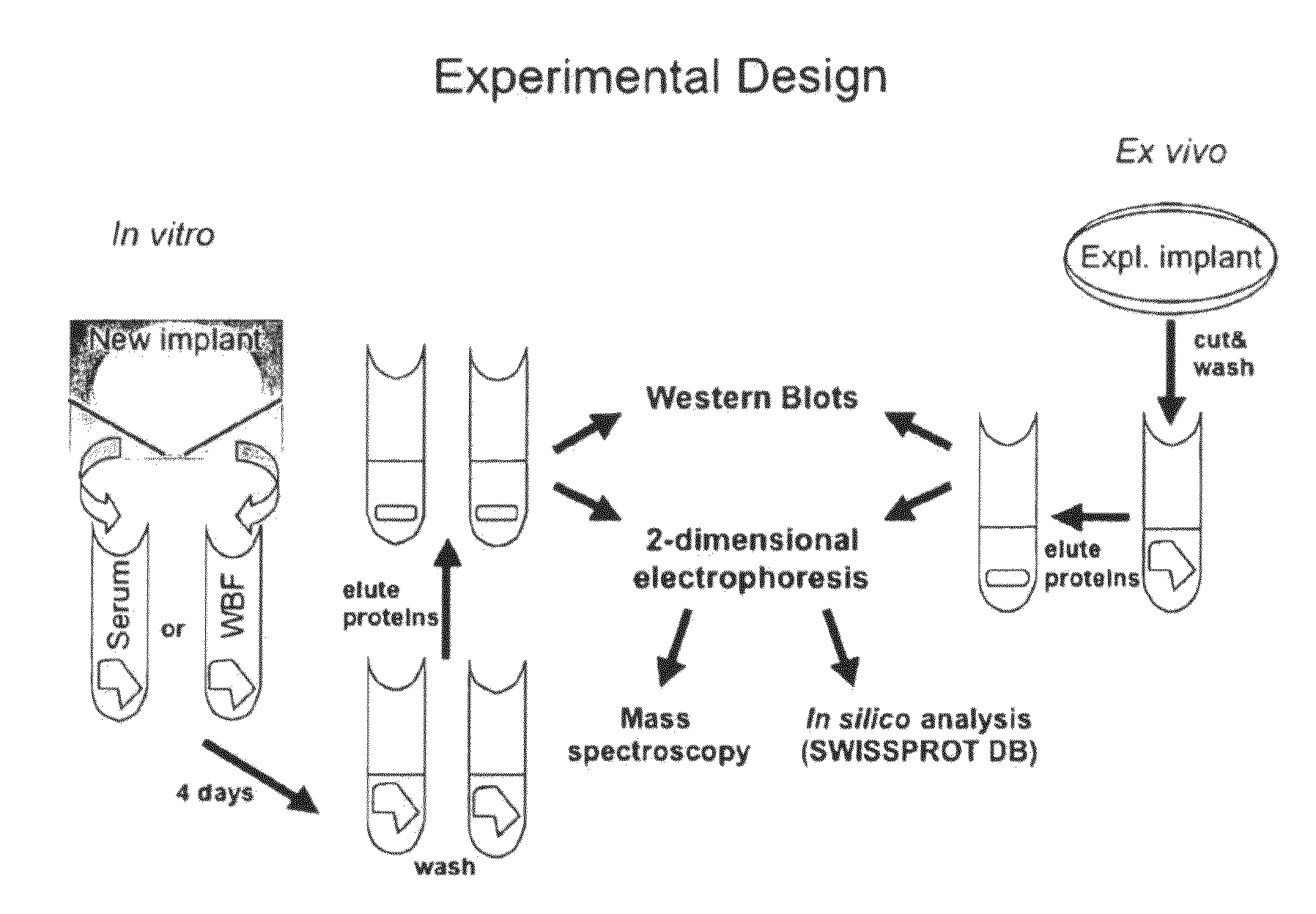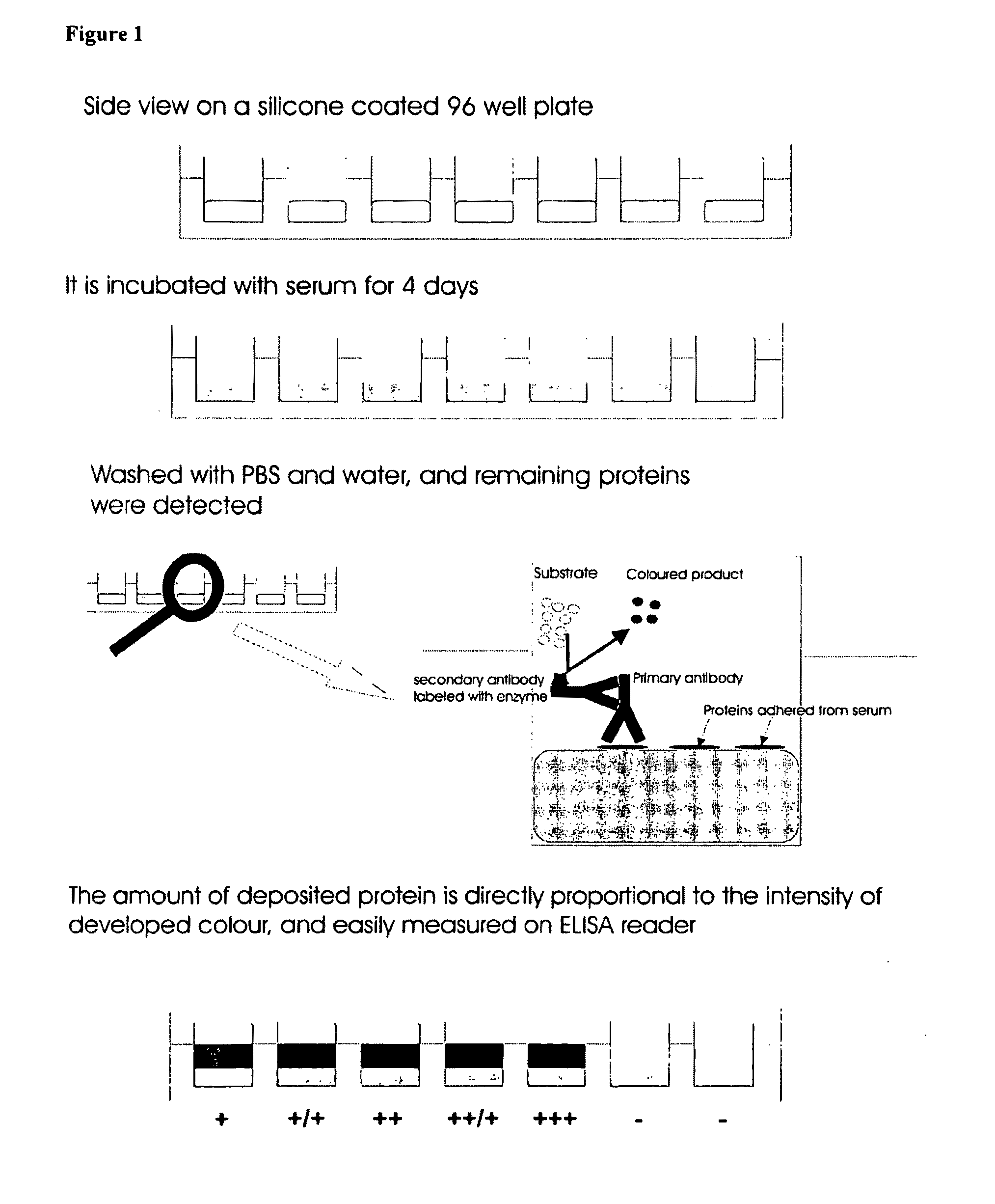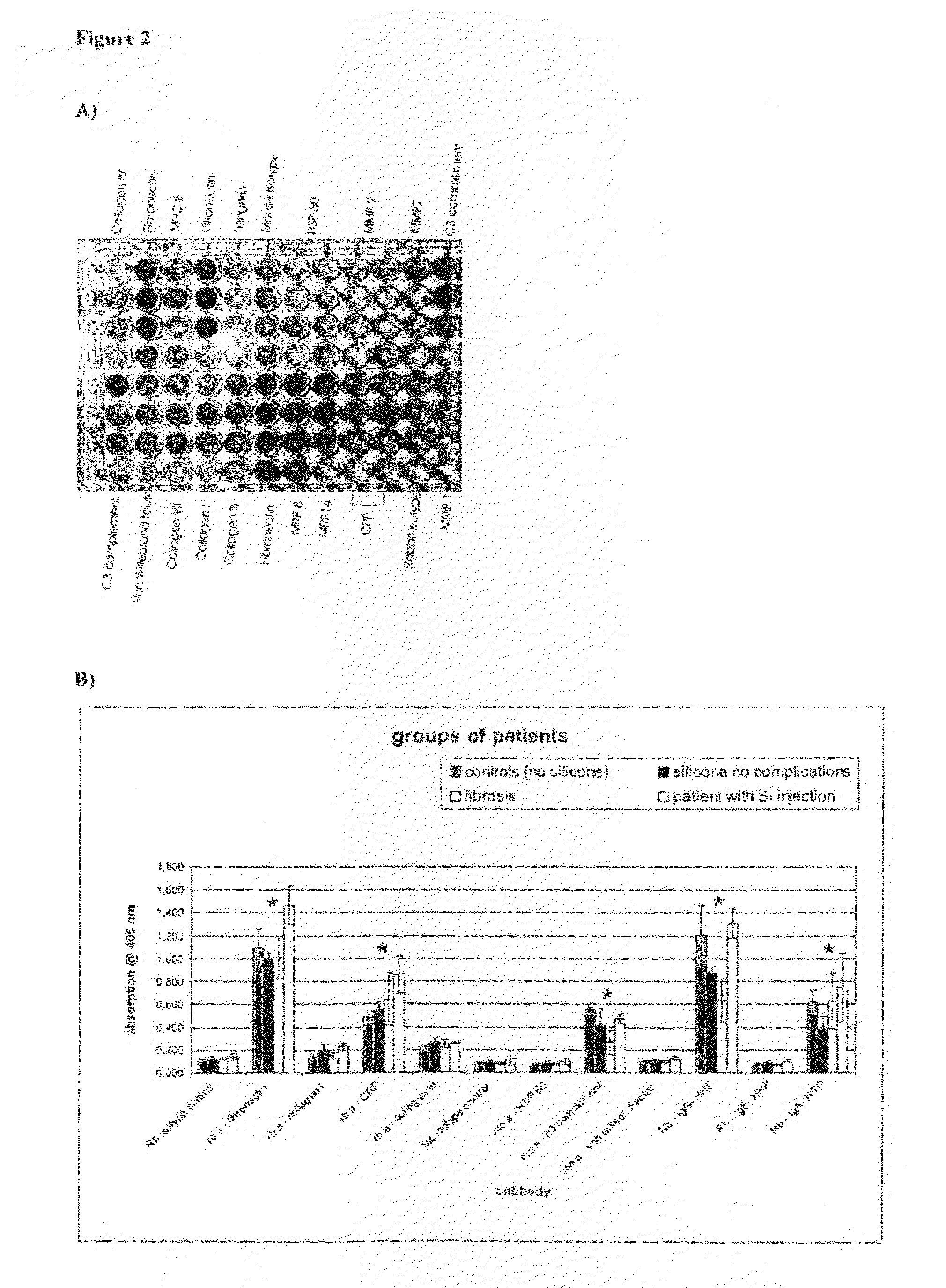Test systems for the analysis of polypeptides and cells adhering to silicones
a test system and polypeptide technology, applied in the field of test systems for the analysis of polypeptides and cells adhering to silicones, can solve the problems of silicone breast implants that are no longer approved for food and drug administration use, capsular contracture and implant rupture, functional impairment of implants, etc., and achieve positive and negative predictive value, increase sensitivity, specificity
- Summary
- Abstract
- Description
- Claims
- Application Information
AI Technical Summary
Benefits of technology
Problems solved by technology
Method used
Image
Examples
example 1
Construction of an in Vitro System for Screening of Proteins Adhering to Various Silicone Types in Vivo
[0149]The principle of protein preparation and analysis is shown in FIG. 3.
[0150]1. Proteins Eluted Ex Vivo
[0151]The inventors have analyzed proteins deposited on SMIs explanted from women suffering from complications after breast augmentation for cosmetic reasons. Thirteen explanted SMIs were obtained from the Clinic for Plastic and Reconstructive Surgery, Medical University Innsbruck (MUI, Innsbruck, Austria). Nine SMIs were gel and 4 saline filled. Eleven SMIs were rough and 2 smooth surfaced. Only intact implants, i.e. without silicone ‘gel bleeding’, were considered for analysis. They were taken under sterile conditions immediately after surgery. The fibrotic capsule was removed in the surgical theatre, and SMIs were transported to the laboratory in phosphate buffered saline (PBS, pH 7.2) supplemented with protease inhibitors. Explanted SMIs were washed with PBS (3×15 min) and...
PUM
| Property | Measurement | Unit |
|---|---|---|
| Molar density | aaaaa | aaaaa |
| Composition | aaaaa | aaaaa |
| Adhesion strength | aaaaa | aaaaa |
Abstract
Description
Claims
Application Information
 Login to View More
Login to View More - R&D
- Intellectual Property
- Life Sciences
- Materials
- Tech Scout
- Unparalleled Data Quality
- Higher Quality Content
- 60% Fewer Hallucinations
Browse by: Latest US Patents, China's latest patents, Technical Efficacy Thesaurus, Application Domain, Technology Topic, Popular Technical Reports.
© 2025 PatSnap. All rights reserved.Legal|Privacy policy|Modern Slavery Act Transparency Statement|Sitemap|About US| Contact US: help@patsnap.com



